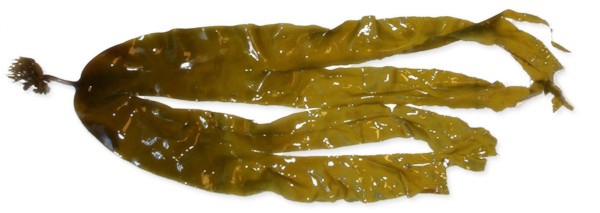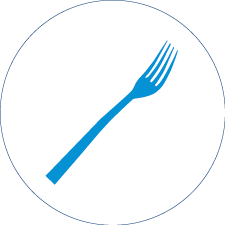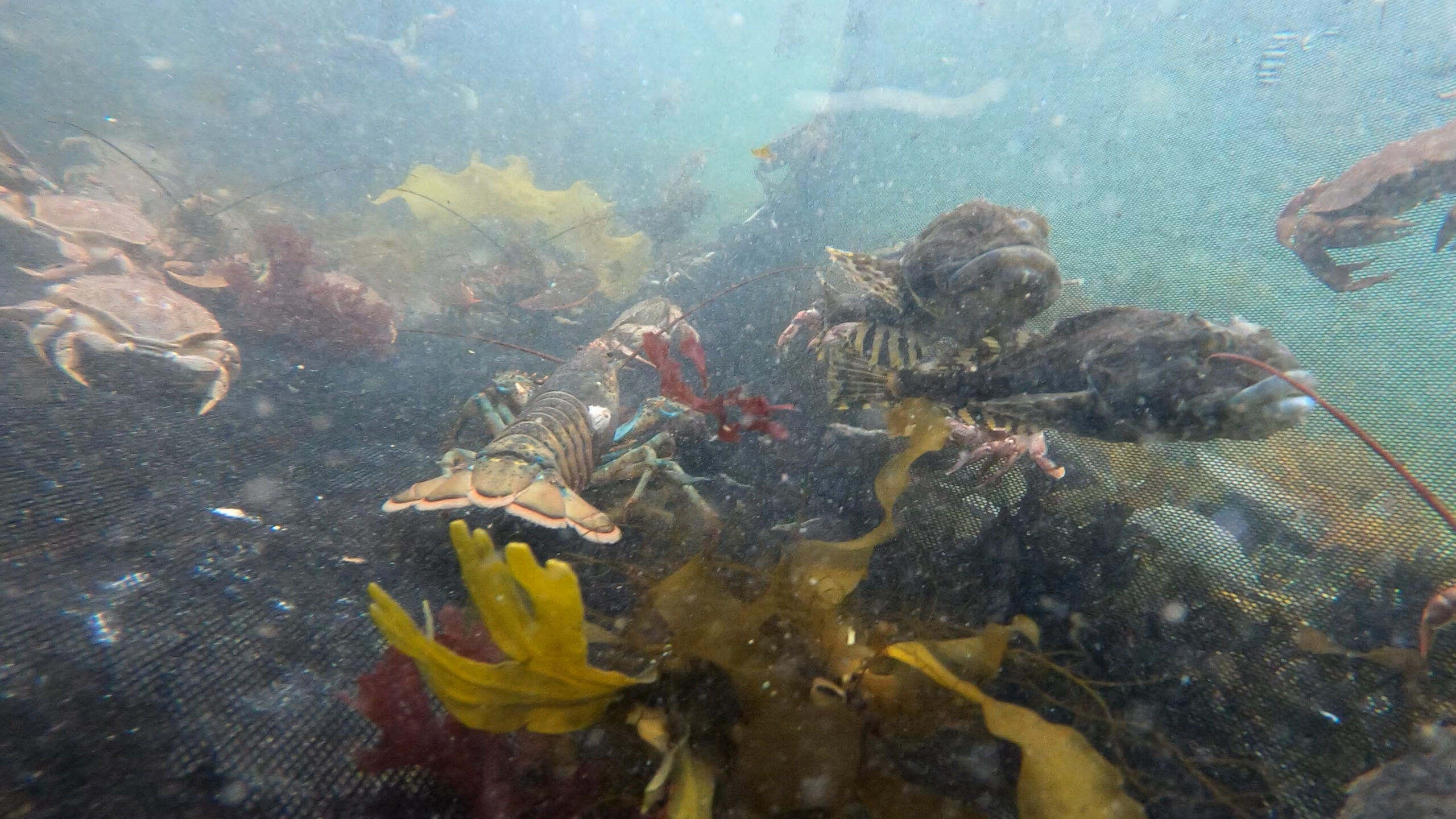
SIZE:
Up to 1.5 m long.
LIFE EXPECTANCY:
3 to 5 years.
LIFE CYCLE:
Oarweed reproduces in summer and autumn. Brownish spots appear on the tips of its fronds. During this period, the alga releases its spores. These settle on the seabed, germinate and produce gametophytes that will reproduce to form a new algae. Oarweed grows from the point where the stipe joins the frond.

Laminaria digitata or oarweed takes its name from its shape, which resembles the fingers of a hand.
Credit: Éric Tamigneaux
Oarweed has a short stipe and a sturdy holdfast. Its frond is smooth, thick and wide at the base. It then divides into several strips, like a hand with open fingers, hence the name of this species (Laminaria digitata). Light to dark brown in colour.
Coastal zone, up to 20 m depth.
Oarweed likes rocky, wave-exposed areas. The division of the frond depends, in particular, on the agitation of its environment.
A good roommate
Oarweed occasionally cohabits with other algae, such as dulse. In such cases, dulse spores may attach themselves to the stipe, and small dulse cells may develop.
PREYS:
CO2
Solar energy
PREDATORS:
Herbivorous molluscs
Grazing fish
MACHINES:
Hand harvesting.
REGULATIONS:
Permit required. Cut every other algae with a sharp object at least 30 cm from the holdfast when harvesting near the shore, or at least 1 m when diving to harvest in deeper waters.
Do not tear off the holdfast.
Harvested between May and October.
What is this algae?
Work carried out by teachers and students at ÉPAQ and a genetics laboratory at UQAR has shown that, in the Gaspé Peninsula, what was considered to be oarweed is actually Hedophyllum nigripes, a species of alga found in Arctic environments.
This does not mean that there is no oarweed in the Gaspé Peninsula. Further research is required to determine the proportion of both species on our coasts.
Oarweed is a Smarter seafood-listed species.
BENEFITS:
Like other brown algae, it is a good source of fibre, minerals, iodine, vitamins and glutamate. It is believed to contain compounds that can help prevent obesity.
LET’S COOK:
Crunchy texture. Subtle marine flavour. Umami taste.
OUR CULINARY ADVICE:
- Oarweed can reduce the cooking time of legumes.
- It can be used as a papillote in which to cook other foods.
- It is also an excellent vegetable side dish.
The waters of the St. Lawrence are known for their good quality. However, as algae absorb the elements present in the water to grow, it is preferable to ensure that the harvesting site is clean before eating this species fresh.






